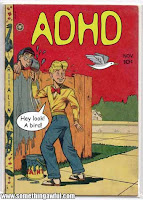Comedy Assessment
1. Does your routine create an environment where the audience feels welcome, connected, safe from ridicule or personal attack, and confident that others will be treated fairly?
2. Do your skits have enough surprise, novelty, and variation to inspire curiosity and to capture and hold attention?
3. Do you follow a structure that helps your audience mentally pattern the information they receive, so that they can better respond to the best parts of your routine?
4. Do have a broad enough repertoire of jokes that you can choose from in order to relate to the cultural variances or personal preferences encountered in multi-cultural audiences?
5. Do you incorporate catch-phrases, ordinary life experiences, socially-shared interests and beliefs into your routine to promote increased memory recall of your jokes?
6. When your audiences' attention wanes during complex or conceptual jokes, do you strive to "show" rather than "tell"?
7. Do you have a cue to alert your audience that the next joke you're about to share is especially important?
8. Do you use multi-sensory demonstrations and cooperative engagement techniques to reach audience members who have the most difficulty directing their attention, seeing patterns, or building relational memories?
(According to an article in USA TODAY, "The number of adults under age 45 who are prescribed drugs for Attention-Deficit Disorder has doubled in the past four years".)
(These are the types of routines that stimulate their brains' release of dopamine and increase their focus. Dopamine plays a crucial role in our mental and physical health. It controls the brain's reward and pleasure centers.)
10. Once you have your audiences' attention, do you stimulate them to stay connected and follow your routine by offering surprises that are coherent with their expectations?
Adults with attention difficulties don't always see an immediate use for new data (jokes), making it harder for them to internalize and "get" the gist of the joke. Incorporating general interests and intelligences early on in the comedy mapping process (professional comedians invest great care in designing their routines) results in higher audience engagement.
Certain general life themes resonate with many people and are amplified when in a social environment. For example, initial jokes incorporating sports, popular music, technology, and seasonal changes will engage most audience members through at least one of their primary or secondary strengths or interests.
A comedian will know when their audience is authentically engaged due to body language gestures, laughing, leaning forward to listen, eyes focused, and so on. Assessing your routine and following the above suggestions will result in audience members who share your jokes because they were personally touched in some way. This assessment is valuable just for that reason.
Linking comedy routines to strong sensory stimulus optimizes an audiences' ability to focus. Connecting information to your audiences' visual, tactile, or auditory sensory-receptive styles enhances the brain's alerting process, responsiveness, and data patterning. The sensory stimulus and concepts must be strong enough to stand out from the barrage of input that many adults must filter, especially in a highly-connected society. When the tactic succeeds and the stimulus becomes a focal point for audience attention, jokes can be processed in the higher cortical functions and stored in the memory.
In this way, the joke lives on...





No comments:
Post a Comment